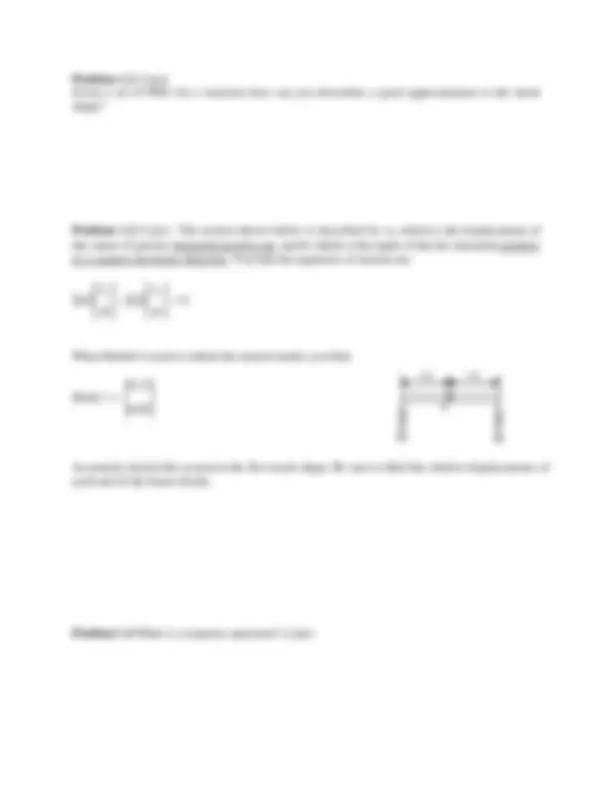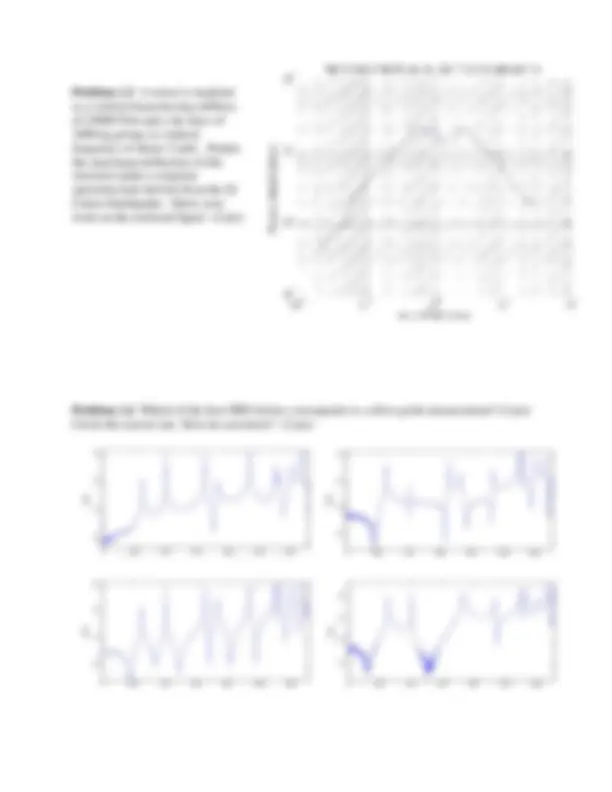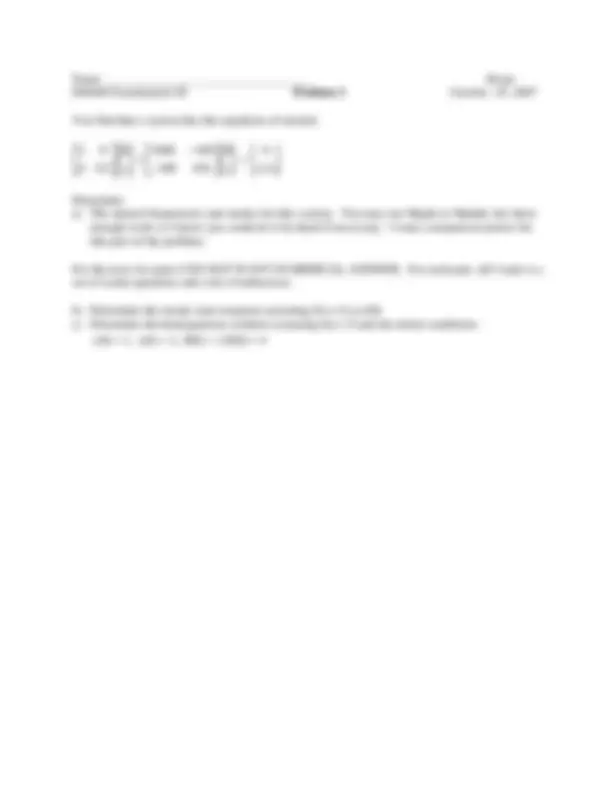





Study with the several resources on Docsity

Earn points by helping other students or get them with a premium plan


Prepare for your exams
Study with the several resources on Docsity

Earn points to download
Earn points by helping other students or get them with a premium plan
Community
Ask the community for help and clear up your study doubts
Discover the best universities in your country according to Docsity users
Free resources
Download our free guides on studying techniques, anxiety management strategies, and thesis advice from Docsity tutors
The examination iii for the em406 course on linear dynamic systems and vibration analysis. Various problems related to sdof systems, fourier coefficients, mode shapes, response spectra, and 2-dof systems. Students are required to calculate fourier coefficients, identify problems with maple results, write maple specifications, estimate the number of terms for fourier series, determine good approximations to mode shapes, understand response spectra, predict maximum deflections, and identify drive point measurements.
Typology: Exams
1 / 7

This page cannot be seen from the preview
Don't miss anything!




NOTE: Don’t get bogged down on short answer problems! You should only spend about 15 minutes on these problems!
Name 30 pts EM406 Examination III Problem 1 October 25, 2007
Problem 1.1 A lightly damped SDOF linear dynamic system has a natural frequency of 20.0 Hz. It is loaded by the periodic forcing function shown below. You should not need your Maple worksheet for any of these problems.
a) The peak amplitude of the periodic function shown above is 100.0 N. Calculate the Fourier coefficient, a 0. (Hint: Maple is NOT needed.) (3 pts)
b) When you apply this forcing to a system you get the following results from Maple for the output. What is the problem with these results? (2 pts)
c) Write the Maple specification of the function shown above. (2 pts)
d) Estimate approximately how many terms you need to include in the Fourier series to model the steady state response? DO NOT use a Maple worksheet to answer this problem. (5 pts)
Force (N)
0.1 0.2^ 0.1 time (sec)
400 – 1000 t
1000 t
Problem 1.5 A tower is modeled as a vertical beam having stiffness of 25000 N/m and a tip mass of 1000 kg giving it a natural frequency of about 5 rad/s. Predict the maximum deflection of this structure under a response spectrum load derived from the El Centro Earthquake. Show your work on the enclosed figure. (4 pts)
Problem 1.6 Which of the four FRFs below corresponds to a drive point measurement? (2 pts) Circle the correct one. How do you know? (2 pts)
0 200 400 600 800 1000 1200
10 -
100
101
102
MAG
0 200 400 600 800 1000 1200
10 -
100
101
102
MAG
0 200 400 600 800 1000 1200
100
101
102
103
Freq (Hz)
MAG
Primary Data, File=angle_data.mat, Response DOF: 1, Reference DOF: 1
0 200 400 600 800 1000 1200
100
101
102
103
MAG
Name 40 pts EM406 Examination III Problem 2 October 25, 2007
You find that a system has the equations of motion:
θ
θ
& x & x f t
Determine: a) The natural frequencies and modes for this system. You may use Maple or Matlab, but show enough work so I know you could do it by hand if necessary. I want a numerical answer for this part of the problem.
For the next two parts I DO NOT WANT NUMERICAL ANSWER. For each part, all I want is a set of scalar equations and a list of unknowns.
b) Determine the steady state response assuming f(t) = 8 cos20t c) Determine the homogeneous solution assuming f(t) = 0 and the initial conditions:
x ( 0 )= 1 , & x ( 0 )= 2 ,θ( 0 )= 3 ,θ&( 0 )= 4
Name 30 pts EM406 Examination III Problem 3 October 25, 2007
The 2-DOF system shown below is forced harmonically with the force f(t) = Fsinωt.
a) Using Lagrange’s equations determine the equations of motion for the two masses shown using the coordinates shown and assuming small angles.
k 1
m 1
x 1
θ
f(t)
k 2
c 1
β
O
r 2 r 1